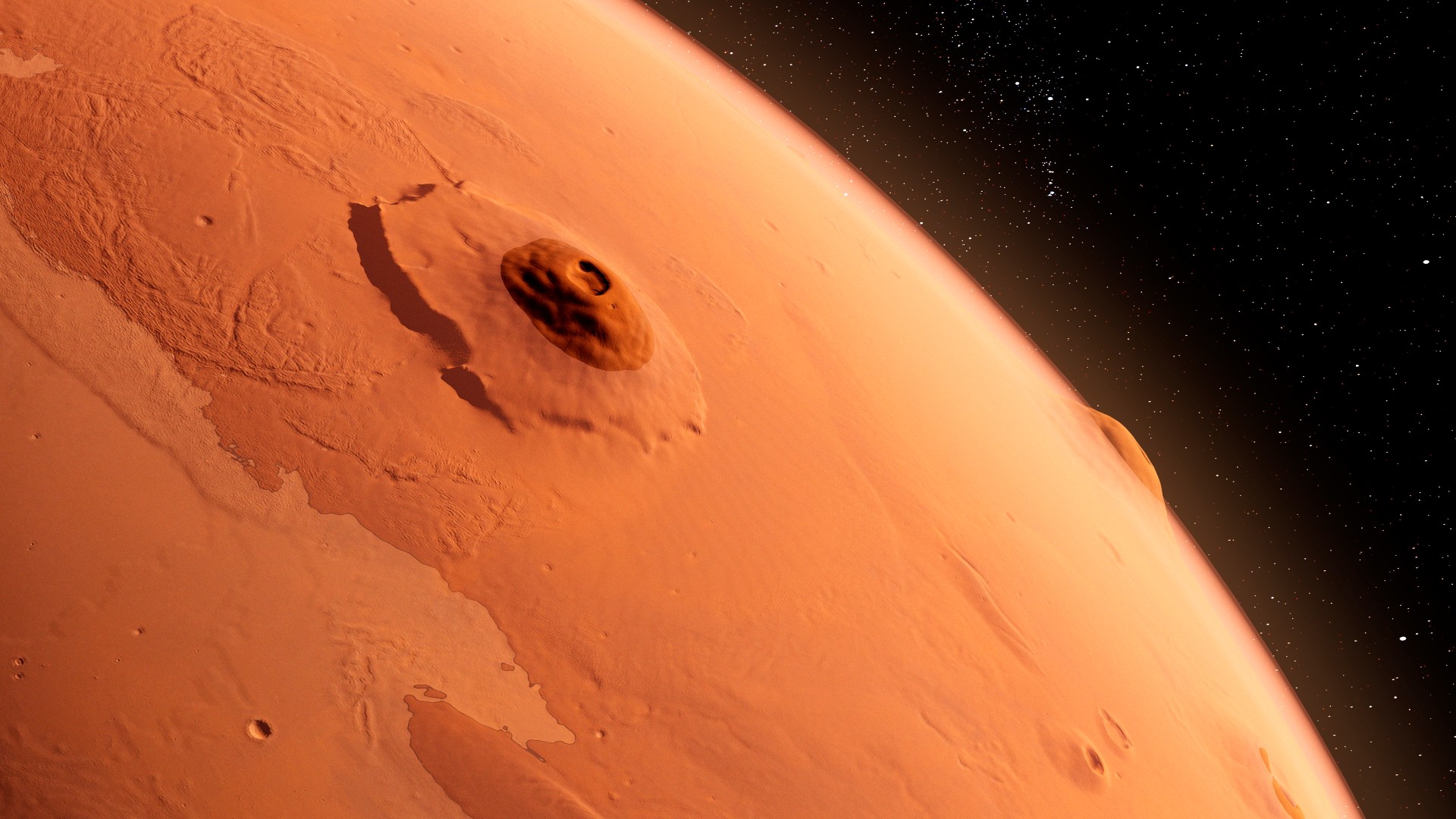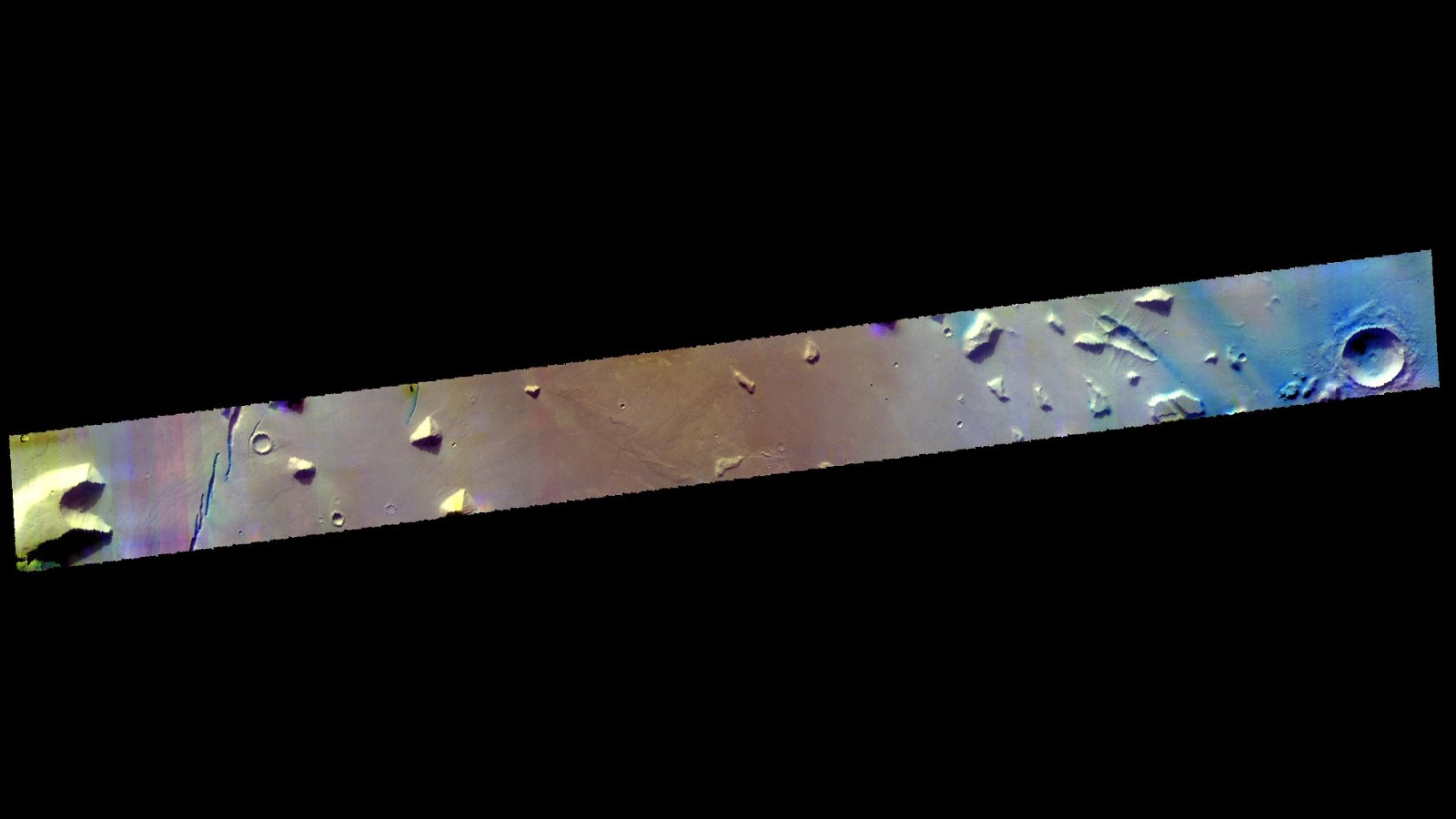'Mars' interior is not behaving,' active mantle plume reveals
In a first, planetary geologists describe an active mantle plume on the surface of Mars.

For decades, astronomers assumed that Mars was geodynamically dead — a planet without rumbling earthquakes and erupting volcanoes. Though remnants of towering volcanoes exist on the surface of the Red Planet today, these colossal structures have been dormant for millions of years. With little to no heat firing the planet's engine, scientists reasoned, Mars became dormant long ago.
However, over the last five years, this assumption has been proven wrong. NASA's InSight mission has detected quakes and even evidence of recent volcanism around one Martian region, known as Elysium Planitia. And now, they think they know why this activity is occuring.
In a paper published in the journal Nature Astronomy Dec. 5, scientists describe what appears to be the first active mantle plume discovered on the Martian surface. Study co-author Jeff Andrews-Hanna, a planetary geologist at the University of Arizona, called the finding a "very big surprise."
The finding suggests that Mars may be cooling significantly more slowly than scientists had anticipated. If this is the case, it could have profound implications not just for the planet's geology but also in the search for water — or perhaps even alien life.
In terms of geology, Mars and Earth have several key differences. Our planet's crust is divided into many tectonic plates, which move around and bump into one another, driving geological activity. "On Earth, most volcanism takes place around the boundaries of these plates," Paul Byrne, a planetary geologist at Washington University in St. Louis who was not involved in the new research, told Live Science in an email.
Related: Mars had a seriously crazy volcanic past, new study of 'UFO' rocks reveals

But Mars lacks separate tectonic plates; instead, its crust is a single continuous sheet sitting atop the mantle. For this reason, scientists think volcanic activity on Mars, both ancient and more recent (geologically speaking), must be the result of mantle plumes.
Sign up for the Live Science daily newsletter now
Get the world’s most fascinating discoveries delivered straight to your inbox.
A mantle plume is an upwelling of hot, rocky material from a planet's mantle, the layer that sits just beneath the crust like the white of an egg under a shell. Unlike an egg white, however, the mantle isn't liquid. "All that material is actually solid," Andrews-Hanna told Live Science, but "over geologic time scales, it's able to flow." This gradual mantle movement allows plumes to bubble to the surface like wax in a lava lamp. Plume activity is generally believed to drive terrestrial volcanoes in places such as Hawaii and Iceland.
Researchers have known for some time that volcanoes used to exist on Mars; the largest known volcano in the solar system, Olympus Mons, was discovered on the Martian surface in 1971. Olympus Mons has been inactive for around 25 million years. Based on what we know of Martian geology, it makes sense for the enormous volcano to be quiet.
Smaller celestial bodies tend to cool faster than their larger counterparts. Planets with a thinner mantle — the geological layer that drives most volcanic activity — also cool off at an even quicker rate. "So, at least in this case, size matters," Byrne said. Mars is about 53% the size of our planet, and its mantle is only 15% as thick. Because of this, scientists have long speculated that Mars should be relatively dead from a volcanic and geological perspective.
This assumption has been challenged in recent years by NASA's InSight mission, which landed a seismometer on Mars in 2018. Since landing in the Elysium Planitia region, Mars' second-largest volcanic region, this device has detected a wellspring of seismic activity. "Maybe 90% of the Marsquakes that we recorded and analyzed come from this one region," study first author Adrien Broquet, a planetary geophysicist at the University of Arizona, told Live Science.
In 2020, scientists also described fissures in the area that may have been volcanically active as recently as 50,000 years ago. And this hot spot just so happens to be the same place where Broquet and Andrews-Hanna posit that the mantle plume is slowly bubbling up.
They suspect that a mantle plume could explain this unexpected seismic and volcanic activity. "What this is telling us is that Mars' interior is not behaving," Andrews-Hanna said.
However, one mantle plume and several hundred Marsquakes do not mean that Mars is gearing up for a massive eruption anytime soon. Assuming the site is indeed volcanically active, Byrne said, "the amount of energy there is still a tiny amount of what the planet once had." In other words, Mars is still cooling, just more gradually than scientists had assumed.
But there is one other exciting implication of discovering an active mantle plume on Mars. "The heat coming from the plume could allow for water," by melting the ice that exists under the planet's surface and creating aquifers, Broquet said. If this is the case, Elysium Planitia could be the best location on Mars to search for evidence of past or present life.

Joanna Thompson is a science journalist and runner based in New York. She holds a B.S. in Zoology and a B.A. in Creative Writing from North Carolina State University, as well as a Master's in Science Journalism from NYU's Science, Health and Environmental Reporting Program. Find more of her work in Scientific American, The Daily Beast, Atlas Obscura or Audubon Magazine.










